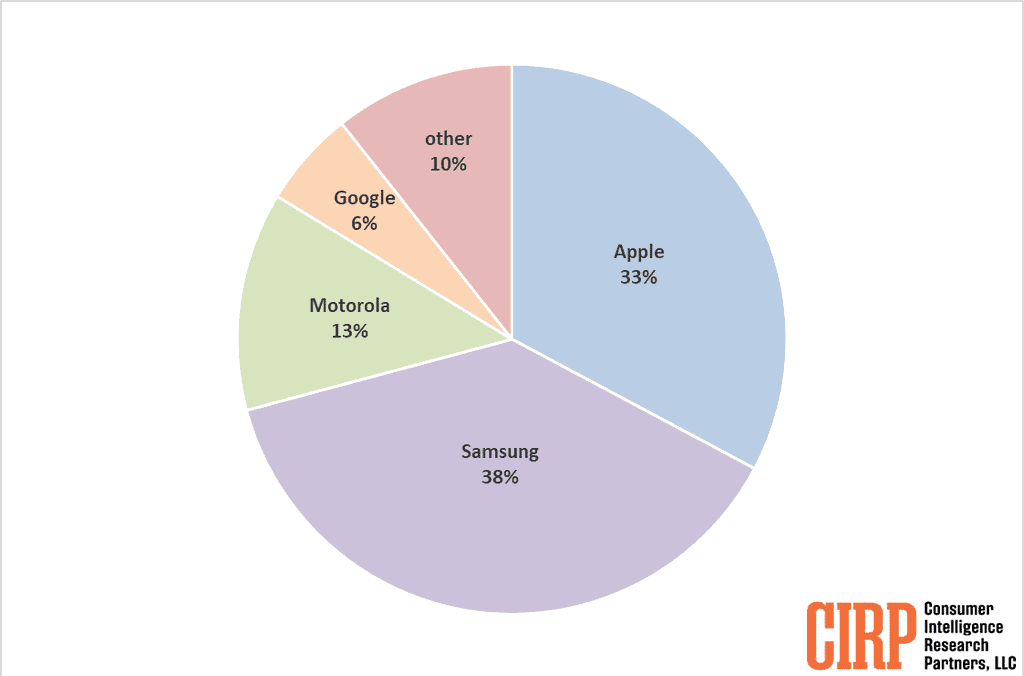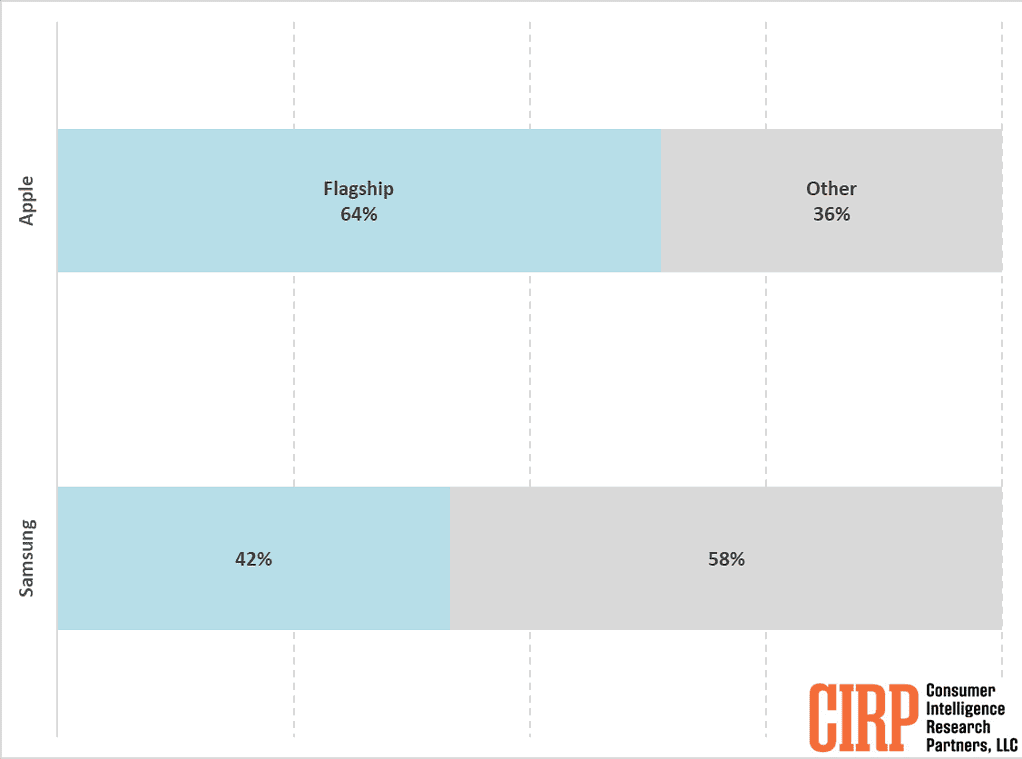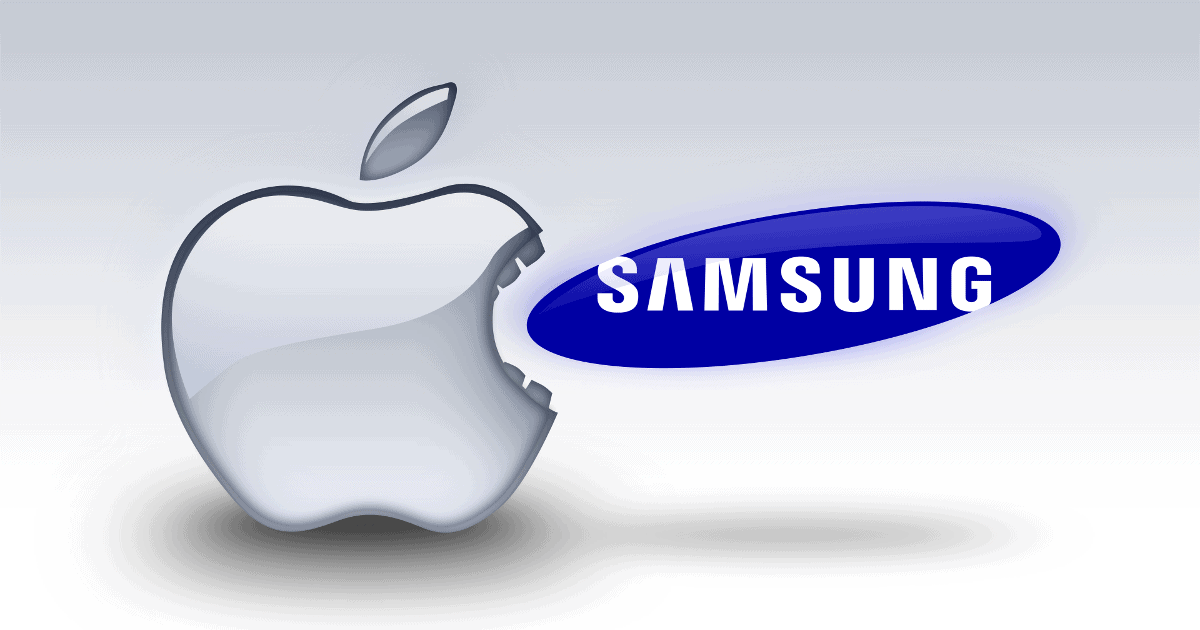Samsung remains at the top of the US smartphone market by unit sales, but Apple has the crown when it comes to selling high-end devices, aka flagships, according to a recent report by CIRP.
The data shows Samsung holds the lead with 38% of the US smartphone market share, while Apple trails behind at 33% (based on a 12-month period ending March 2024).

But, the picture changes when we look specifically at flagships. Here is what they mean by “flagship” phones:
For Apple, we define “flagship” as the most current model family. For the twelve-month period ending March 2024, this means the four iPhone 15 models (15, Plus, Pro, and Pro Max) and the similar iPhone 14 models in the months prior to the September 2023 launch of the iPhone 15 models.
For Samsung, we define “flagship” as the Galaxy S23 and then S24 models, the Flip, and the Fold. The S23 and S24 models include Plus, Ultra, and base variants. As with Apple, the prior year models continue to be sold after the introduction of the new models, though at reduced prices, and then are no longer considered “flagship” phones.
In the flagship category, Apple comes out on top. Nearly two-thirds (around 64%) of iPhones sold in the US are the newest and most expensive models, compared to less than half (around 42%) of Samsung’s flagship Galaxy phones.

This difference boils down to contrasting sales strategies. Samsung offers a wider variety of phones, including older flagship models, budget-friendly “A” series devices, and the iPhone SE competitor. Apple, on the other hand, focuses more on premium models and a single, more affordable option with the iPhone SE.
While Samsung might sell more phones overall because of its broader range of options, Apple makes up for it by selling a larger portion of its high-margin flagship devices, i.e., greater profits for Apple despite selling fewer total units.
More here.
